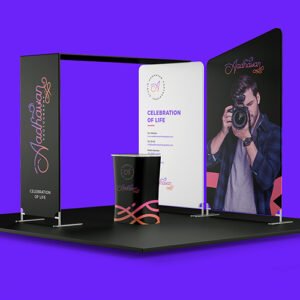Infographics are powerful tools for presenting complex information and data in a visually compelling and easy-to-understand format. They combine text, visuals, and data representation techniques to tell a story, convey a message, or educate the audience. Here’s an exploration of how infographics can effectively communicate and tell compelling stories through visual data representation:
Data Selection and Simplification:
Infographics begin with the process of carefully selecting relevant data and information. The goal is to identify key insights and simplify complex data sets into digestible chunks. By focusing on the most important and impactful data points, infographics avoid overwhelming the audience and enhance clarity.
Visual Hierarchy and Story Flow:
Infographics should have a clear visual hierarchy that guides the audience through the information. Start with an attention-grabbing headline or introduction, followed by a logical flow of content. Use visual cues such as size, color, and placement to emphasize key points and create a narrative structure that keeps the audience engaged.
Visual Representation of Data:
Infographics employ various techniques to visually represent data. Bar charts, line graphs, pie charts, and diagrams help illustrate relationships, trends, comparisons, or proportions effectively. Icons, illustrations, or images can complement the data representation, making it more relatable and engaging. The visual elements should be clear, accurate, and aligned with the data being presented.
Use of Color and Typography:
Color and typography play a crucial role in enhancing the visual appeal and readability of infographics. Consistent color schemes help organize information and create visual coherence. Use color strategically to highlight important data points or create visual associations. Typography choices should be legible and aligned with the overall design aesthetic, ensuring easy comprehension of the text.
Simplicity and Clarity:
Infographics should strive for simplicity and clarity in both design and content. Use concise and straightforward language to explain complex concepts. Avoid cluttered layouts or excessive text, focusing on presenting the most important information. White space can be utilized effectively to create visual breathing room and improve readability.
Storytelling Elements:
Infographics can incorporate storytelling elements to engage the audience. Introduce a narrative structure with a clear beginning, middle, and end. Use visual storytelling techniques, such as sequential graphics or illustrations, to guide the audience through the information. Storytelling adds context, emotion, and relatability to the data, making it more memorable.
Balance between Visuals and Text:
Infographics strike a balance between visuals and text to effectively convey the message. Visuals should enhance and support the information provided in the text, avoiding redundancy. Use text sparingly, focusing on key insights, labels, and explanations that complement the visuals. Utilize concise headlines, subheadings, and bullet points to improve scannability.
Design Consistency and Branding:
Infographics should adhere to consistent design principles and align with the brand identity. Use brand colors, typography, and visual elements to create a cohesive visual experience. Consistency in design builds recognition and establishes a sense of professionalism.
Responsiveness and Accessibility:
With the prevalence of digital platforms, infographics should be responsive and adaptable to different screen sizes and devices. Consider accessibility guidelines to ensure that the infographic can be accessed and understood by a diverse audience. Use alternative text for images, provide text versions, and ensure color contrast for readability.
Infographics have the potential to captivate audiences and communicate complex information effectively. By combining data representation techniques, storytelling elements, and thoughtful design choices, infographics can present compelling stories that inform, educate, and engage viewers in a visually stimulating manner.








